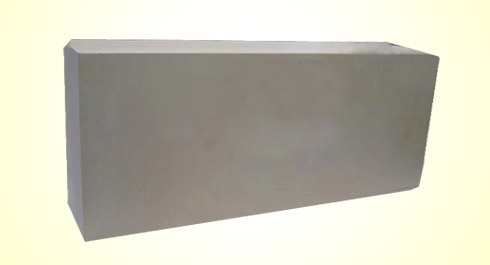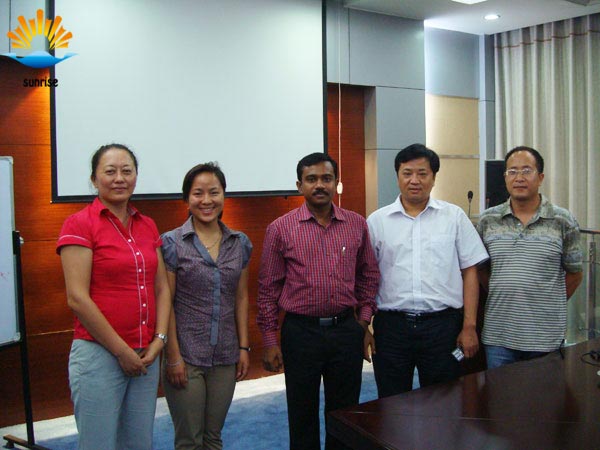
Product List
Success Case
Contact Us
- 0086 371 63838939
- 0086 371 63835539
- sales@sunriserefr.com
- tkfanyi
- No.36 Fengchan Road, Zhengzhou City

News
The Crystal Structure And Corrosion Resistance Of Fused Cast AZS Block
- More related products
- Fused Cast AZS
- Fused Cast Alumina Block
- Fused Cast High Zirconia Block
- Fused Cast Skid Rail Block
Fused cast AZS block is widely used in glass furnaces for superstructure and areas in contact with the molten glass due to its great corrosion to molten glass. The crystal structure of fused cast AZS block plays an important role in increasing its corrosion resistance to molten glass.

Fused cast AZS block is characterized by a homogeneous interleaved crystal structure and has elongate dendritic zirconia crystals in the active area. It has a microstructure essentially comprising of corundum (alpha-alumina) crystal, baddeleyite crystal, eutectic crystal and an intercrystalline vitreous phase. The corundum and the baddeleyite crystals are partly combined in eutectic crystals and kept together by the intercrystalline vitreous phase.
Fused cast AZS block contains 40% ~ 55% Al2O3, 33% ~ 41% ZrO2, 10% ~ 16% SiO2 and 1% ~ 3% of an alkali metal oxide (Na2O and/or K2O). Every chemical composition plays its role in forming the crystal structure of AZS block.
ZrO2 contributes baddeleyite crystals. Baddeleyite crystal exhibits great corrosion/erosion resistance to molten glass. ZrO2 is preferably contained in a large amount with a view to improving the corrosion resistance. However, due to the expansion and shrinkage caused by a phase transition of ZrO2, with the increase of ZrO2 content, it tends to be difficult to obtain an ingot free from cracks.
Al2O3 is an important component like ZrO2. Al2O3 constitutes corundum crystals. The corundum crystal forms eutectic crystals with baddeleyite crystal. It exhibits strong corrosion resistance and have a characteristic that they show no abnormal expansion or shrinkage due to a temperature change. However, with the increase of the content of Al2O3, mullite is likely to form and it tends to be difficult to obtain an ingot free from cracks.
SiO2 is the main component for forming the intercrystalline vitreous phase. The intercrystalline vitreous phase can reduce the expansion or shrinkage of ZrO2 within the above temperature range and keep the corundum and the baddeleyite crystals together. If the amount of SiO2 is too small, it will be difficult to obtain an ingot free from cracks and the block will not exhibit a good structure. But with the increase of SiO2 content, mullite is likely to form and it tends to cause the exudation of the matrix glass.
Although the corrosion resistance of Na2O and/or K2O is weak, they can modify the intercrystalline vitreous phase, control the viscosity of the matrix glass, prevent the formation of mullite and thereby encourage the formation of an intercrystalline vitreous phase. But too much Na2O or K2O will cause problems of exudation and reduce corrosion resistance.
Sunrise offers top quality fused cast AZS blocks 33#, 36# and 41# which have good crystal structure and high corrosion resistance. They can be widely used in the lining of glass furnace,the metallurgical furnace, sodium silicate furnace and ceramic furnace, and increase the service life of the furnaces effectively.
- Read more
- Practical Application and Abrasion Resistance of Refractory Materials
- Fused Cast AZS 33 Brick With Good Dense Structure For Glass Furnace
- Fused Cast AZS 36 Brick With High Corrosion Resistance To Glass Liquid
- Long Service Life Brick-Fused Cast AZS 41 Brick With Almost No Shrinkage Cavities
- Fused Cast Alpha-Beta Alumina Brick Which Can Minimize Contamination To Glass Liquid
Leave Message
For more information on any of our products please get in touch using the form below. One of our sales team will respond to your enquiry as soon as possible.

Copyright © 2014 Zhengzhou Sunrise Refractory Co., Ltd. 豫ICP备13002126号












